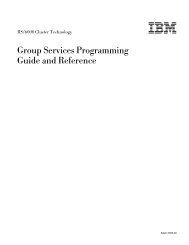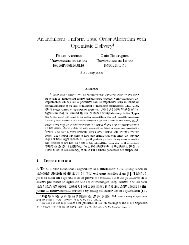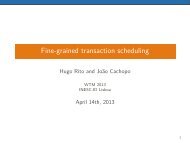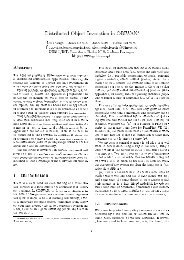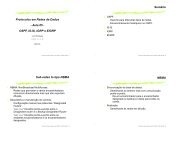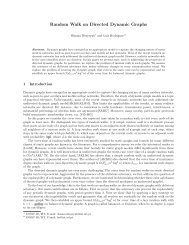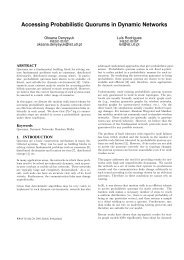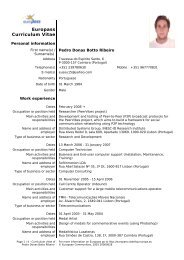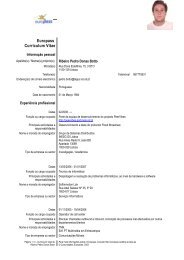Selfish and Malicious Behavior in Delay-Tolerant Networks
Selfish and Malicious Behavior in Delay-Tolerant Networks
Selfish and Malicious Behavior in Delay-Tolerant Networks
You also want an ePaper? Increase the reach of your titles
YUMPU automatically turns print PDFs into web optimized ePapers that Google loves.
est delivery probabilities for Type I, s<strong>in</strong>ce the replication <strong>and</strong> discard<strong>in</strong>g mechanisms used<br />
by both ensure selection of the best sets of messages to transmit <strong>and</strong>/or remove,<br />
respectively. For Type II, all protocols experienced reductions <strong>in</strong> the delivery probability as<br />
misbehav<strong>in</strong>g nodes degrade the network conditions.<br />
Protocols, like MaxProp <strong>and</strong> RAPID, are barely affected by Type I misbehav<strong>in</strong>g nodes.<br />
But due to the additional overhead caused by Type II misbehav<strong>in</strong>g nodes, their performance<br />
degrades with the <strong>in</strong>crease of the percentage of misbehav<strong>in</strong>g nodes.<br />
Figure 2 Average Delivery Probability as function of the percentage of Types I <strong>and</strong> II misbehav<strong>in</strong>g nodes<br />
5.2 – Average Message Buffer Time<br />
Due to the direct transmissions approach used by DD <strong>and</strong> Spray <strong>and</strong> Wait, they present the<br />
highest values of buffer time <strong>in</strong> comparison with other protocols. For both types of<br />
misbehav<strong>in</strong>g nodes, DD presents buffer time values very close to the maximum TTL, see<br />
Figure 3, as the protocol buffers messages until it f<strong>in</strong>ds the dest<strong>in</strong>ation nodes or drops them<br />
if they expire. Nevertheless, Type II presents a slight reduction on the buffer time with the<br />
<strong>in</strong>crease of misbehav<strong>in</strong>g nodes. This happens because of the high number of messages<br />
generated by the Type II misbehav<strong>in</strong>g nodes which cause an <strong>in</strong>creased radio usage<br />
prevent<strong>in</strong>g other nodes <strong>in</strong> communication range from deliver<strong>in</strong>g their messages.<br />
Both versions of Spray <strong>and</strong> Wait suffer more with misbehav<strong>in</strong>g nodes due to the spray<br />
phase, as the source node can replicate messages to misbehav<strong>in</strong>g nodes that silently drop<br />
them. As a consequence, with the <strong>in</strong>crease of the percentage of misbehav<strong>in</strong>g nodes, the<br />
protocol tends to reduce buffer time.<br />
Other DTN rout<strong>in</strong>g protocols presented <strong>in</strong> this paper, despite their rout<strong>in</strong>g algorithms,<br />
have smaller values of average buffer time as they replicate messages to encountered nodes<br />
more often, which reduces buffer time.<br />
5.3 – Average Message Hop Count<br />
Figure 4 show that when nodes do not misbehave First Contact (FC) presents the highest<br />
hop count. This is due to the fact that FC forwards messages to the first encountered nodes<br />
<strong>and</strong> these messages are cont<strong>in</strong>uously forwarded until they reach the <strong>in</strong>tended dest<strong>in</strong>ation<br />
node. The <strong>in</strong>crease of misbehav<strong>in</strong>g nodes causes a reduction <strong>in</strong> the number of hops<br />
travelled by messages <strong>in</strong> all rout<strong>in</strong>g protocols, for the same reasons as it caused a reduction<br />
<strong>in</strong> the delivery probability.<br />
As expected, DD has the smallest value of hop count due to the use of a direct<br />
transmission approach. Because of the spray phase, Spray <strong>and</strong> Wait has a few more hops.



